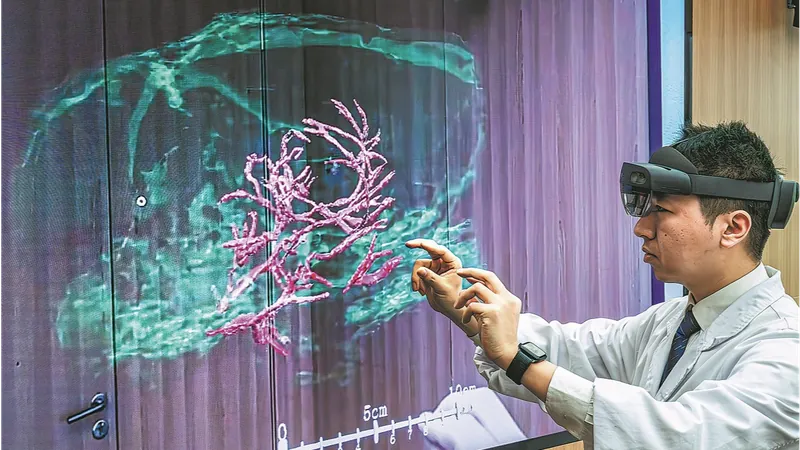
Revolutionizing Neural Monitoring: Meet the 'NeuroWorm'
2025-09-19
Author: Sarah
A Game-Changer in Neural Technology
In a groundbreaking breakthrough, Chinese scientists have unveiled the 'NeuroWorm'—an innovative microfiber designed to move freely inside the body, heralding a new era in neural monitoring and brain-machine interfaces.
What is the 'NeuroWorm'?
This astounding fiber, measuring just 200 micrometers wide (thinner than two human hairs), is capable of tracking electrical signals from neurons and detecting subtle tissue changes throughout the body—an ability that sets it apart from traditional fixed monitoring devices.
Transforming Treatments for Neurological Diseases
The potential applications for the 'NeuroWorm' are immense. Yan Wei, a lead scientist from Donghua University in Shanghai, explained the revolutionary advantages for patients with conditions like Parkinson's disease. Instead of requiring multiple electrode implants in various brain areas, this single, dynamic fiber can traverse different regions, monitoring neural signals and even alleviating symptoms via electrical stimulation.
Inspired by Nature
The design of the 'NeuroWorm' draws from the segmented body of earthworms, allowing it to control movement and sensory feedback effectively. This unique construction was carefully developed by a team led by Liu Zhiyuan at the Shenzhen Institute of Advanced Technology.
Precision and Safety—A New Standard
Unlike conventional neural interfaces that often require invasive repositioning, the 'NeuroWorm' offers a non-invasive solution due to its inherent flexibility and softness. With 60 nano-level micro sensors embedded, this fiber provides unmatched precision in monitoring, capable of tracking multiple neural and biomechanical signals simultaneously.
Long-Term Compatibility
Research indicated that the 'NeuroWorm' is remarkably biocompatible, remaining in muscle tissue for up to 13 months without triggering adverse reactions, a significant improvement over existing devices.
Navigating the Body with Precision
The secret to the 'NeuroWorm's' mobility lies in its innovative open magnetic control system, which allows it to steer through tissues much like an earthworm burrowing through soil, capturing vital neural signals along its journey.
A Vision for the Future of Bioelectronics
Zhu Meifang, a strategic advisor for this cutting-edge study, emphasizes that this advancement aims to revolutionize bioelectronics—transitioning from static, passive recordings to active, intelligent collaboration, potentially reshaping future treatments for neurological disorders.
Published Findings
The promising findings regarding the 'NeuroWorm' were recently published in the renowned journal Nature, marking a significant milestone in neural material science.

 Brasil (PT)
Brasil (PT)
 Canada (EN)
Canada (EN)
 Chile (ES)
Chile (ES)
 Česko (CS)
Česko (CS)
 대한민국 (KO)
대한민국 (KO)
 España (ES)
España (ES)
 France (FR)
France (FR)
 Hong Kong (EN)
Hong Kong (EN)
 Italia (IT)
Italia (IT)
 日本 (JA)
日本 (JA)
 Magyarország (HU)
Magyarország (HU)
 Norge (NO)
Norge (NO)
 Polska (PL)
Polska (PL)
 Schweiz (DE)
Schweiz (DE)
 Singapore (EN)
Singapore (EN)
 Sverige (SV)
Sverige (SV)
 Suomi (FI)
Suomi (FI)
 Türkiye (TR)
Türkiye (TR)
 الإمارات العربية المتحدة (AR)
الإمارات العربية المتحدة (AR)